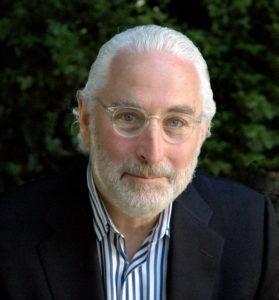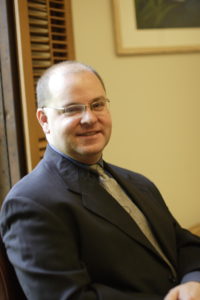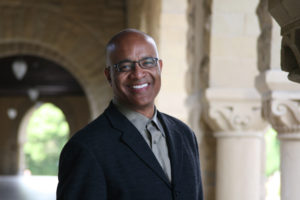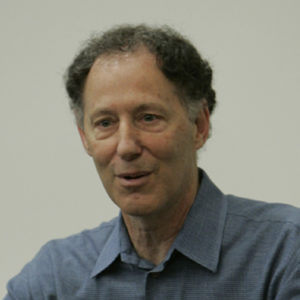SLS Faculty Weigh In on Recent SCOTUS Decisions
With the 2013 Supreme Court term nearing an end, Stanford Law School faculty weigh in on key decisions.

Riley v. California Decision on June 25, 2014
The U.S. Supreme Court unanimously ruled that police need warrants to search the cellphones of people they arrest. In a landmark Fourth Amendment case, Riley v. California, Stanford Supreme Court Litigation Clinic students and Professor Jeffrey Fisher represented David Riley, a college student currently serving a 15-to-life prison term in large part due to evidence found on his cellphone by police in a warrantless search.
“The decision brings the Fourth Amendment into the 21st century. The core of the decision is that digital information is different. It triggers privacy concerns far more profound than ordinary physical objects. Indeed, the Court quite rightly suggests that many Americans now feel greater privacy in their smart phones than in their homes. It’s gratifying to see the Court accounting for that fundamental shift in assessing what is “reasonable” under the Fourth Amendment. Living Constitution or not, it shows the genius of the Framers’ design and the Court at its best.”
Read Q&A with Professor Fisher on this ruling »
Jeffrey L. Fisher is a Professor of Law and Co-Director of the Stanford Supreme Court Litigation Clinic. A nationally recognized expert on criminal procedure, he has argued 23 cases in the Court, on issues ranging from criminal justice to maritime law to telecommunications and administrative law.

American Broadcasting Cos. v. Aereo, Inc. Decision on June 25, 2014
IP Law expert and Stanford Law Professor Paul Goldstein on the SCOTUS decision in American Broadcasting Cos. v. Aereo, Inc., a case that pitted major television networks against start-up Aereo, a streaming service accused of having a business model that amounted to theft of programming. The 6-3 decision was seen as a victory for the major television networks.
“In assessing the impact of the Supreme Court’s Aereo decision, it is important to distinguish between what the Court said that it did, and what in fact it did. The majority opinion’s repeated characterization of Aereo as being just like a cable system; its distinction of Aereo from cases in which the subscriber is merely storing its own content on the Cloud; and its express disavowal of any desire to encompass differently-configured technologies, leave no doubt that the Court intended a narrowly-cabined opinion. But it is the Court’s careful, explicit—and correct—construction of the statutory definition of “public performance” that will effectively control future decisions among lower courts and technology companies planning new services, and it is highly likely that this construction will bring within the scope of copyright a great many activities, probably including RDVR systems like the one involved in Cablevision, and not just those that look like cable.”
Paul Goldstein is the Stella W. and Ira S. Lillick Professor of Law at Stanford Law School. He is the author of an influential four-volume treatise on U.S. copyright law and a one-volume treatise on international copyright law, as well as leading casebooks on intellectual property and international intellectual property.

Halliburton Company v. Erica P. John Fund, Inc. Decision on June 23, 2014
Stanford Law Professor Ken Scott on Halliburton Company v. Erica P. John Fund, Inc., a case that might have ended the ability of shareholders to sue companies for securities fraud.
“In Halliburton Company v. Erica P. John Fund, Inc., the Supreme Court examined whether securities fraud suits against companies are valid, determining that plaintiffs can continue to file class actions on the basis of investor reliance, but that the company in question can prevent the case at an earlier stage by proving stock was unchanged by the fraudulent statement.
In a nutshell: a split verdict. The judge-created implied private right of action for an alleged rule 10b-5 violation will continue with a “presumption” of investor reliance, which is the basis for the plaintiffs’ bar to bring class actions. But the defendant company can try to “rebut” the presumption by showing that the alleged misrepresentation did not change the market price, because the market was not “efficient” enough to sustain such a presumption (or perhaps the misrepresentation was not “material”?).
So the plaintiffs’ bar is still in business, but the defendant has a chance to effectively end the suit before there is class certification, expensive discoveries begin, and the case is heading toward trial. At that point, almost all of these suits are settled for substantial sums, to avoid the uncertainties of a jury’s decision.
Thus both sides can claim a (partial) victory.”
Ken Scott is the Ralph M. Parsons Professor of Law and Business, Emeritus, at Stanford Law School and a senior research fellow at the Hoover Institution. He is a leading scholar in the fields of corporate finance reform and corporate governance who has written extensively on federal deposit insurance issues and federal banking regulation.

Alice Corp. v. CLS Bank International Decision on June 19, 2014
Stanford Law Professor and leading IP expert Mark Lemley on Alice Corp. v. CLS Bank International, in which the Court unanimously ruled that basic business methods may not be patented, even if computers are used to apply them.
“Alice Corp. v. CLS Bank International dealt with the legitimacy of patenting software, finding that abstract ideas cannot be patented simply because they implement generic computer technology.
In a year with ten IP decisions, six in patent law, Alice v. CLS Bank is a big deal. The Court makes it clear that simply implementing an idea in general-purpose computer technology does not make it patentable. I expect that holding to invalidate the majority of all software patents in force today. You can patent particular improvements in computers, but you can’t patent using a computer or the Internet to implement your idea.
The Court also reaffirms its holding in Mayo v. Prometheus, which many patent lawyers had thought (or hoped) was a deviation from the norm. Instead, it appears to be the rule. That will make it harder to get patents in the medical diagnostic field as well as in software.
This is the only Federal Circuit case the Supreme Court affirmed—and note that the Federal Cir was split 5-5 on this issue. The Federal Circuit definitely has a perception problem at the Supreme Court. But a majority of the judges on that court have been appointed in the last five years, and they have an opportunity to turn that perception around.”
Mark Lemley is the William H. Neukom Professor of Law at Stanford Law School, the Director of the Stanford Program in Law, Science and Technology, and the Director of Stanford’s LLM Program in Law, Science and Technology. One of the most widely cited IP scholars, he is the author of seven books (most in multiple editions) and 135 articles on these and related subjects, including the two-volume treatise IP and Antitrust.

Schuette v. Coalition to Defend Affirmative Action Decision on April 22, 2014
An expert in family law, employment discrimination law, and race and the law, Stanford Law Professor Ralph Richard Banks on Schuette v. Coalition to Defend Affirmative Action, a case that looked at affirmative action in admissions to public universities.
“In Schuette v. Coalition to Defend Affirmative Action, the Supreme Court upheld the anti-affirmative action measure, Proposal 2, enacted through a statewide ballot initiative. The Sixth Circuit had invalidated Proposal 2 under the so-called political restructuring doctrine. Developed through a series of cases in the late 1960s and 1970s, the Supreme Court created the political restructuring doctrine to justify the invalidation of facially neutral reconfigurations of the political process that had the effect of undermining minorities’ rights by making it more difficult for them to enact favorable legislation. In one case, the voters in Akron, Ohio overturned the fair housing ordinance enacted by the City Council and amended the City Charter to require that any antidiscrimination housing measure be put to the voters and adopted in a city wide election. In another case, after a local school board adopted a busing plan to reduce minority students’ racial isolation, the voters passed a state initiative that prohibited busing for purposes of desegregation. In each case, the Supreme Court invalidated the “political restructuring,” as having unfairly disadvantaged minorities.
In Schuette, the Court could justifiably have applied the political restructuring doctrine and invalidated Proposal 2, but it chose not to. That only two Justices dissented suggests how much constitutional law has changed since the 1970s. Then, courts attempted to develop an expansive conception of the types of state action that might impermissibly burden minorities. Now, minorities are left at the mercy of the very political processes that courts of an earlier era strived to protect them from.”
Rick Banks is the Jackson Eli Reynolds Professor of Law at Stanford Law School. His scholarship often explores the challenges of race in American, such as in his best selling book Is Marriage for White People? How the African American Marriage Decline Affects Everyone.

Marvin M. Brandt Revocable Trust v. United States Decision on March 10, 2014
Stanford Law School Professor and Vice Dean Mark Kelman on Marvin M. Brandt Revocable Trust v. United States, a property dispute between a Wyoming landowner and the federal government that asks: What happens when a railroad abandons its right of way?
“The case turns largely on a question involving the distinction between pre-1870 and immediately post-1870 statutes granting RRs rights of way in the west and whether the RRs in the immediate post-1870 period were granted something like a conventional exclusive easement which simply no longer burdens an owner’s land once abandoned or whether they were granted some RR-specific interest in land — not a full-blown fee interest that would give them effective ownership over the strip the RR tracks passed through (and everything beneath the strip) but something “fuller” than a right to pass over another’s land (something akin to a surface rights fee simple determinable) that would presumably revert to the grantor (in this case the government) when no longer used.
As you can doubtless see from this very condensed description, it’s not a very interesting case, and the issues that get raised about the relevant Supreme Court precedents—the majority says that the government’s earlier successful claim that the railroads didn’t own the sub-surface minerals precludes them from saying now that they granted anything but an easement, the dissenter notes that both the post-1870 acts themselves and two early 20th century cases seem to do nothing to reverse the presumption that the government gets the land back after it’s no longer in use—are not especially compelling either. Property rights advocacy organizations got involved in the case for one practical reason (they thought that the government’s efforts to circumvent the need to take and pay compensation to owners to set up hiking trails by claiming that they owned the hiking rights all along stripped a particular set of owners of rights) and for one symbolic reason (they didn’t like the idea that government grants could implicitly reserve rights in the government in the absence of explicit reservation since they worried that governments would make all sorts of implicit reservation arguments if that were permitted). But I think the case was narrower and less ideological than that.”
A prolific scholar whose jurisprudential interests range from law and economics to cognitive psychology, Mark G. Kelman, the James C. Gaither Professor of Law, has applied social science approaches to diverse legal fields including criminal law, taxation, administrative regulation, and disability law.
